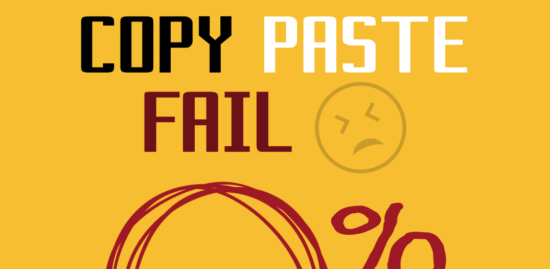Copy-Paste-Fail
Did you know that if you don't cite your sources, you could fail?
How to prevent plagiarism?1
(The following texts were taken from or inspired by the document Comment éviter le plagiat?, a component in Université de Lyon’s Le bestiaire des plagiaires campaign).
Cite your sources correctly!
Plagiarism is the act of deliberately or unintentionally presenting as your own the work of another person. Someone reading your work must be able to distinguish between what you’ve written yourself and what you’ve borrowed from others.
To this end, when borrowing something from someone else, you have to:
- Put the source text in quotation marks or in some cases, use italics;
- Reword what you’ve taken from a source in your own words.
In either case, you must immediately identify in your text the name of the author, and then indicate the source fully in the final bibliography.
Do you know what the different kinds of plagiarism are?
Paraphrase
When you reword an excerpt or idea in your own words, you still have to cite your source.
Images and graphics
Whenever you use images, graphics or statistics, you always have to identify your sources.
Slide presentations
It is the same rules for the slides you use for a presentation : add them on the slides as a note or compile them as a list at the end.
Translations
Even if you translate a text, you still have to cite your source.
Internet
Anonymous sources associated with Internet content also have to be referenced.
Self-plagiarism
You have to cite yourself when you use your own work done earlier.
Group work
When a document prepared by several authors contains plagiarised elements, all the authors will be held responsible.
Online sources on preventing plagiarism and citation styles
- Writing and Citing, Info research 101 Concordia University
- Using Research, Purdue OWL
- Citation Styles, in Unlocking Research
Printed guide (available at the library)
Jane E. Aaron (c2018). The Little, Brown Essential Handbook, 9th Canadian edition, Toronto, Pearson, 405 p.
1 Information taken from or inspired by the document Comment éviter le plagiat?, a component in Université de Lyon’s Le bestiaire des plagiaires campaign.


